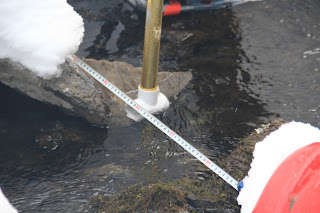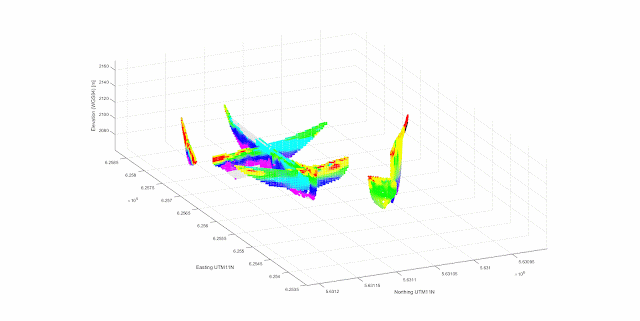I've spent the last few months with the blinders on, focused on writing the thesis. I'm about 7-10 days away from finishing the first draft, and taking a moment to finally update this blog. Here are a few things I've been up to since the fall.
February 2017 field visit
I was invited to write a short piece in for the Canadian Society of Exploration Geophysicists in the April issue of their magazine, the CSEG Recorder. My study, which uses geophysics in an alpine setting for hydrological applications is well outside what most CSEG members are used to dealing with, so it was nice to describe how I use geophysics in my little niche. The article is only available to members for the first 4-5 months after release. If you're not a member, here's a short abstract to whet your appetite:
Scanning Calgary’s ‘Water Towers’: Applications of Hydrogeophysics
in Challenging Mountain Terrain
Craig W. Christensen, Masaki Hayashi, Laurence R. Bentley
The University of Calgary, Department of Geoscience
Alpine zones provide critical water storage for drier
lowland areas like the Canadian Prairies. Groundwater plays an important role by helping delay the release of snowmelt to
surface streams, but these storage processes have only recently been studied
and are not yet completely understood. Traditional methods for hydrogeological
investigations are not usually logistically possible. Geophysics offers a
low-cost alternative, and is useful for obtaining high-resolution datasets with
large coverage. This article, using example data from our most recent project, illustrates
how our research group uses geophysics to study mountain groundwater storage processes.
We emphasize three key lessons from our alpine studies that
other practitioners of hydrogeophysics may also find enlightening. First, while
logistically challenging, geophysics is an effective preliminary investigation
tool for hydrogeological problems where direct sampling is not possible.
Second, surface observations and supporting measurements are key to making
effective interpretations. Finally, while some ambiguity may be unavoidable,
using multiple geophysical methods that sample independent geophysical parameters
greatly reduces the uncertainty in our final interpretations.
Interesting Data Plots
Many of the last months
have been spent manipulating, plotting, and interpreting my data. Here are a
few interesting ones worth sharing.
First up, here's a 3D
view of my resistivity cross-sections in the talus deposits at the south end of
my site. You'll notice generally that the resistivity in the near surface is
very high (10,000-30,000 Ωm), and generally decreases going down. There are
places where we have more conductive material at surface (500-3,000 Ωm)
corresponding to springs at surface (the blue dots below). Hence, I suspect
that the green parts of the image are places with higher water content. There's
also a especially high resistivity anomaly on the left side of the image in the
shade that I suspect is permafrost.
|
|
Resistivity
cross-sections in the talus. The letters above stand for "West
Cone", "Central Cone", and "Upper East Cone." The
blue spheres indicate the locations of springs.
|
I also tried out some
ways of visualizing both my resistivity and seismic velocity data together.
Below is the result of something called "fuzzy k-means clustering."
Basically, this is an algorithm that takes a dataset, and tries to group it into
meaningful groups that would not be obvious looking at just one variable at a
time. In the first plot below, I plotted up all of the locations where I had
overlapping resistivity and p-wave velocity, and grouped them into 7 different
groups. After grouping them, I coloured these locations in my 3D model (second
plot below) according to which group each point belonged to.
While it's neat to look
at, the method doesn't enhance my interpretation much because there's only one
group of very high resistivity and high velocity material that is particularly
distinct in this data set. Also, values below 100 Ωm are significant for my
study because they are usually wet, saturated material, but that sort of
geologic intuition isn't built into the method. Still, it's a neat method that
is probably useful in other contexts.






















